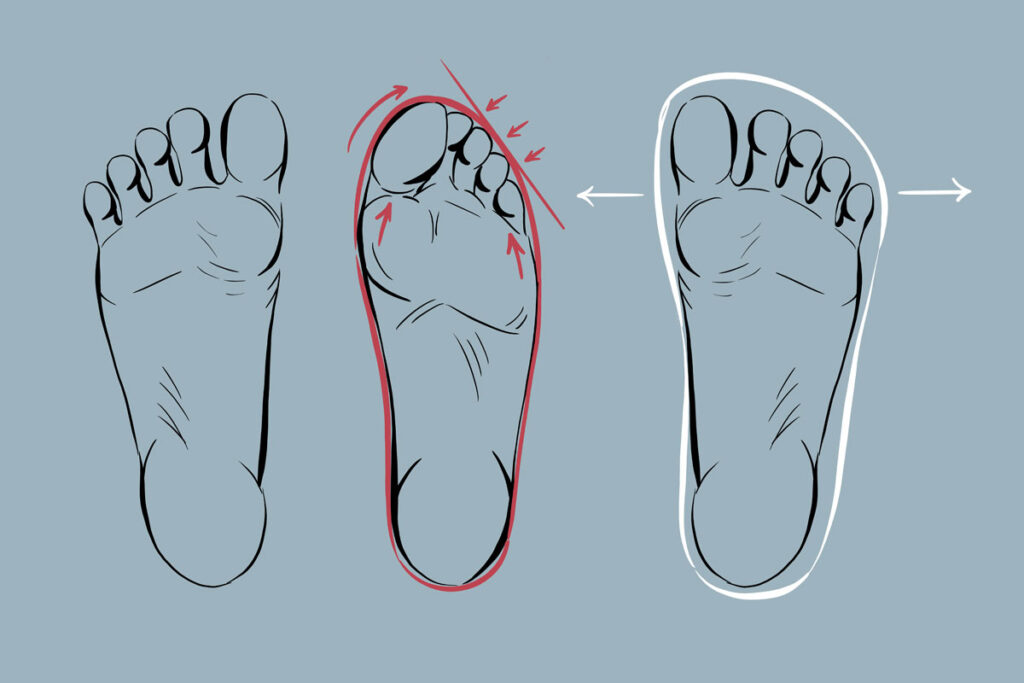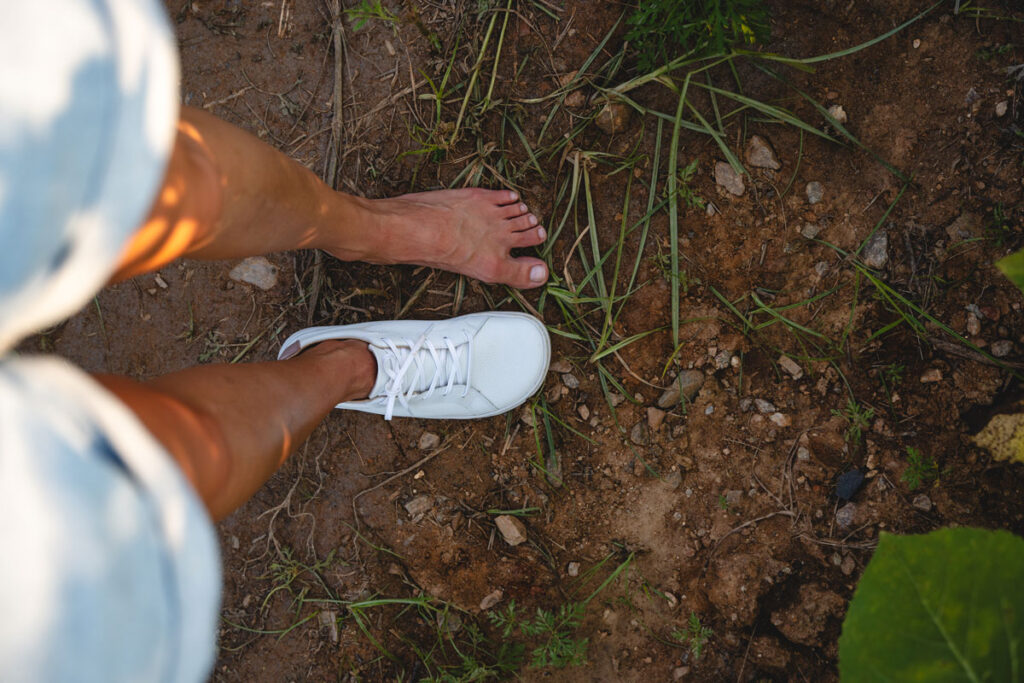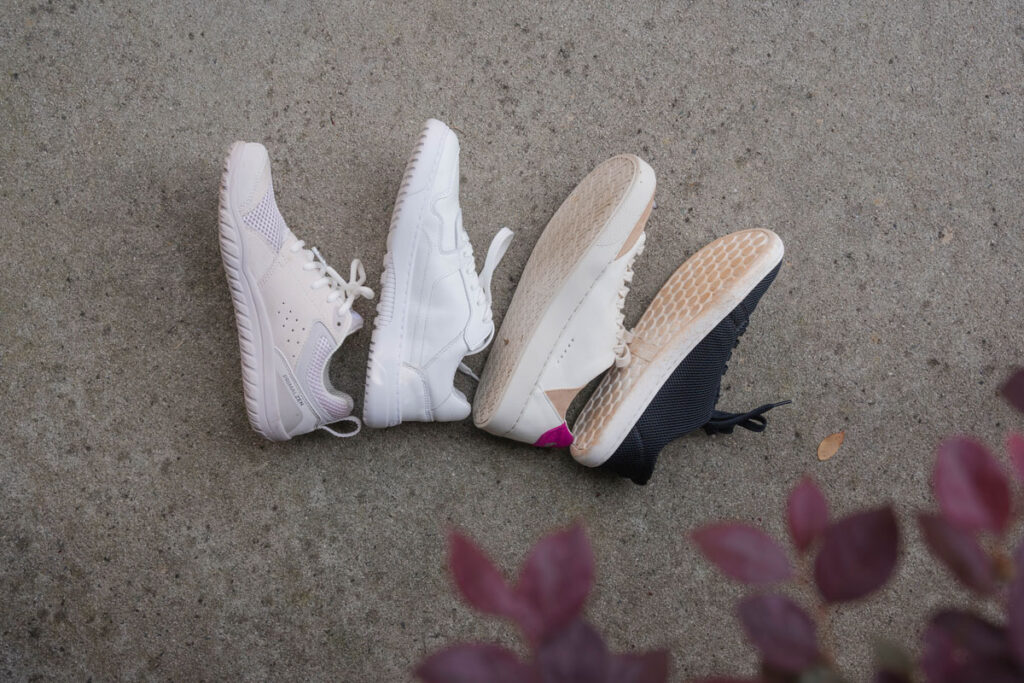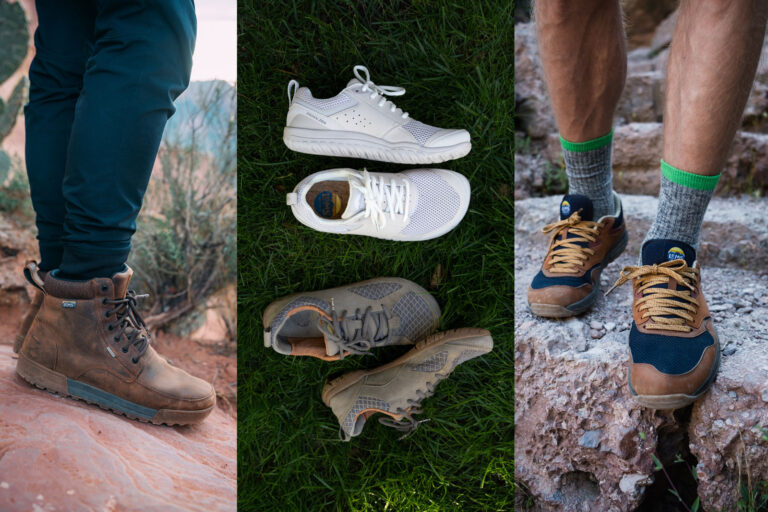Are barefoot shoes comfortable?

Are barefoot shoes comfortable? Yes! But here’s the long answer.
Thin soles. No arch support. No extra cushion in the heel.
Maybe you’ve recently learned about barefoot shoes and the idea piques your interest, but you’re not sure how a shoe could be comfortable without support and cushion.
Most of us have grown accustomed to these features from years of wearing conventional shoes, so it’s totally normal to have some reservations about giving them up.
If you want my short answer to, “Are barefoot shoes comfortable?” it’s a resounding “yes!” But if you’re about to try them out for the first time, you’re going to want this longer answer with a full explanation.
Wearing is believing
Before I do go into all the features and try to explain why barefoot shoes are comfortable, I will say that the best way to answer this question is obtained through firsthand experience.
Wearing is believing with barefoot shoes.
That doesn’t mean it’s going to be love at first wear for all people though. If you’re starting off with weak feet, you may need to slowly transition. Build up your foot strength before barefoot shoes are comfortable for all-day wear for you. If your feet are accustomed to external support, barefoot shoes can be a wake-up call.
Here’s a helpful transition guide if you’re just starting out with barefoot shoes.
Stop squishing your toes!
The most immediate difference I noticed when taking off my conventional shoes and replacing them with barefoot shoes was that my toes were no longer squished together! A narrow, tapered toe box puts pressure on the toes and the toe nails—I always used to have throbbing pain where my shoes pressed the side of my toenail into my skin.
The relief when I switched to barefoot shoes was immediate! A wider toe box allows your toes to stay in their proper alignment and naturally splay…you’re basically just not squishing them anymore.

Not only is a narrow, tapered toe box uncomfortable, it’s often the main culprit in painful foot deformities like bunions and hammer toes. People also often see a decrease in toe mobility, and a change in walking gait that can have other negative impacts up the kinetic chain. This is not saying that barefoot shoes are a magical cure all, but many people who have had knee, hip or back pain noticed an improvement when switching to barefoot shoes and working to improve their foot strength and walking gait.
If you are concerned about any of the other changes, I would try to at least get into a wide toe box as it can have a hugely positive impact on your foot health.

Can you feel everything?
The amount of cushion in conventional shoes has gotten out of control. Some shoes look and feel like you’re walking on squishy marshmallows. While we may think giving our feet extra cushion is treating them with TLC, it’s depriving them of sensory feedback and stimulation (your feet have over 200,000 nerve endings—they need to feel something).
So the answer is yes, with the thin sole of barefoot shoes, you can feel a lot more. But that doesn’t mean it needs to be painful. There is a range of sole thicknesses, so you can still find something that offers the flexibility and feedback necessary for a natural walking gait, but still provides some cushion for comfort.
Start with this list of barefoot shoes for beginners for options that have moderate cushion.
The benefit of that thinner sole is that you’re now feeling the forces actually at work, instead of unknowingly subjecting your joints to greater forces as you can’t tell how hard you’re slamming your heels into the ground like when you’re wearing a heavily cushioned shoe
With barefoot shoes, people often tread lighter and make the changes towards a more natural walking gait, which is better for our feet and the rest of our body.
And if you’re worried about walking on glass or sharp objects, I’ve walked through large cities and traveled extensively in barefoot shoes, and have yet to have anything pierce through the sole of my shoe.

But what about support?
It’s preached that anyone toddler and above NEEDS arch support, NEEDS ankle support. But several studies show that unshod populations have healthier, stronger feet (1, 2) compared to habitually shod populations. The conclusion is that generally, shoes lead to weaker feet, not stronger feet.
When a foot is supported and cushioned in a shoe, the intrinsic foot muscles don’t get used as much or in the same ways as when walking barefoot. Just like every other muscle and structure in our body, our foot muscles and structures need to be used to be strong and mobile.
What about the achilles and a zero-drop sole?
Some people do have a shortened achilles from wearing a raised heel—even most athletic shoes have a heel-to-toe drop of around 10mm. If you have been wearing a shoes with a higher heel-to-drop (including high heels), you may need a longer time to transition to barefoot shoes. Gradually build up your time wearing barefoot shoes until you can wear them all day without and discomfort.
Studies
If you came here with the question, “Are barefoot shoes comfortable?” I hope that answered it for you! If you have any other questions, drop a comment below.







One Comment